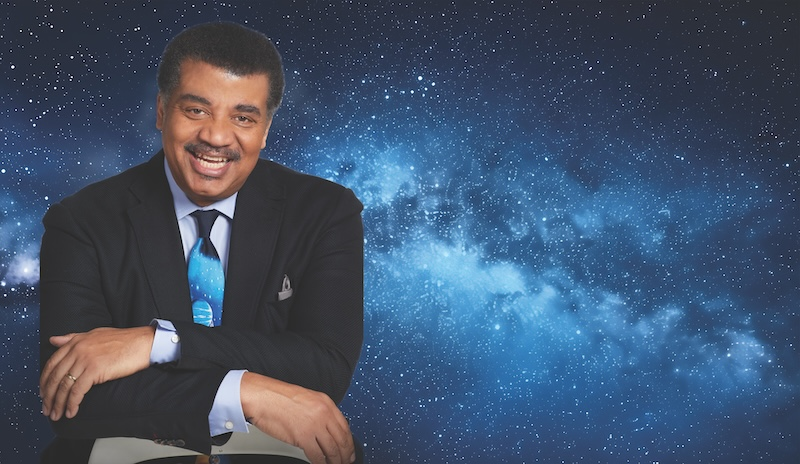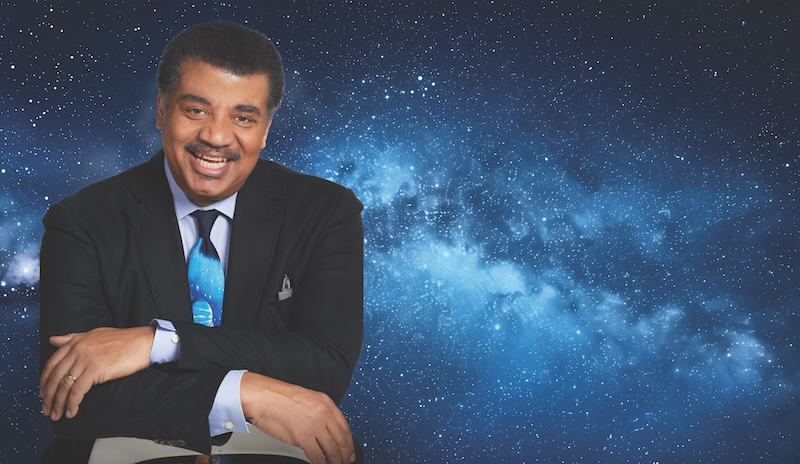Don’t Lecture, Communicate!
Few physicists are as familiar to the general public as Neil deGrasse Tyson, the astronomer and science communicator who directs the Hayden Planetarium at the American Museum of Natural History in New York City. He has popularized science through books, radio talk shows, documentaries, and many other media appearances. He was featured alongside Superman in a DC Comic and appeared in the TV series The Big Bang Theory to defend Pluto’s demise as a planet.
Earlier this year, DeGrasse Tyson was honored for his contributions to science at the 25th Stars of Stony Brook Gala, a fundraising event that collected over $2 million for student scholarships at Stony Brook University in New York. Speaking at the ceremony, he stressed the importance of science literacy in today’s world, in particular, in view of climate-change challenges. “STEM fields are necessary for the survival of our civilization,” he said. “You need STEM wisdom so that the future generations will be proud of the decisions we make in this generation.” At the gala, deGrasse Tyson shared with Physics Magazine his thoughts on science communication.
All interviews are edited for brevity and clarity.
Should scientists consider outreach as part of their duties?
Unless you’re a researcher in industry, the work you do is funded by taxpayers. So all of us, whose livelihoods depend on the public’s embracing what we do, have a duty to give something back. Journalists do a great service in building bridges between science and society, but I think the world would be better off if more scientists did that as well.
Yet many scientists feel unprepared to communicate. Why do you think that is?
Unfortunately, the system does not reward reaching out to the public. At best, it’s neutral. But in some circles, it’s even counted against you. “Why aren’t you in the lab?” is one of the reproaches.
Is there anything that universities or academic institutions should do?
Perhaps communication of your field to nonspecialists should become a requirement for all graduate students. One day you might have to talk to a member of Congress. Or you might be at a cocktail party and talk to someone important who has influence over funding or grants. You can’t keep promoting a priesthood where only a select group know what’s going on and others don’t. I am reminded of the cancellation of the superconducting supercollider in 1993. When scientists were defending the project in front of Congress, parts of the testimony I heard lacked the power to reach the audience, to compel them intellectually or emotionally.
Any communication strategies you’d recommend to scientists?
I can’t expect every scientist to embrace my approach, but I spend more time than most of my colleagues thinking about what interests the public. That includes exposing myself to a lot of popular culture. So when the Super Bowl comes on, I’m going to watch it, even if I don’t care much about football, because the next day everyone is going to be talking about it. And if there’s some bit of physics I can infuse into that conversation, I’ll do it.
Can you give an example?
There was a football game a few years ago that went to a sudden-death overtime: Whoever scores next, wins the game. One of the teams, the Cincinnati Bengals, had the ball at the 45-yard line and attempted a field goal. The kick goes up, and no one breathes while the ball tumbles through the air, hits the left upright, and careens in for the win. I said, wait a minute, could the Coriolis force have played a role? I checked the orientation of the stadium and did a fast back-of-the-envelope calculation. I then posted on social media that the sudden-death victory by the Cincinnati Bengals was aided by a third-of-an-inch deflection to the right caused by the rotation of Earth. People lost their minds.
My point here is that everyone already knows football, so I don’t have to explain what a field goal is or what the upright is. So that’s a scaffold to which I can then affix science. I posted that tweet to get people’s attention, and then I went on to describe the effects of the Coriolis force. Football is the excuse, and people stay for the science. There is a lot of value in knowing pop culture as an educator, as it allows you to communicate rather than lecture. When you are a lecturer, you require that people come 90% of the way to you. As a communicator, you go 90% of the way to your audience.
How do you see the landscape of communication evolving, with overconsumption of social media and decreasing attention spans?
If that’s what we have to deal with, then I’ll navigate that. I cannot change the attention span of people who live on TikTok. But I can post TikTok content that’s competitive with other content and reaches 5.8 million followers. Disclosure: People a third my age are telling me what’s trending and what I should pay attention to! And there are some positive developments in terms of gender balance and diversity: At least half of online science communicators are now women, like Science Girl and Physics Girl. I have this fantasy where enough other people get onto the media landscape that I can just back up slowly and exit without anyone noticing.
What research directions are you paying attention to these days?
I’d like to know if there’s life under the frozen surface of Europa—there are some missions headed there in the coming years. I’d also like to dig under the surface of Mars to look for water. It’d be fun to pitch a tent at the South Pole of the Moon, where we think water may be trapped in craters. I’d like to see more international cooperation in space. The Artemis Accords, which has been signed by multiple countries, is a forward-thinking recipe for conduct in space. If we have the chance to be friends in space, maybe we can bring some of that back on Earth.
–Matteo Rini
Matteo Rini is the Editor of Physics Magazine.





